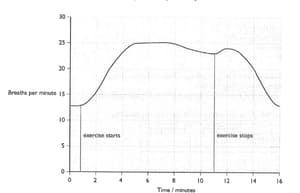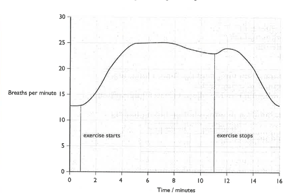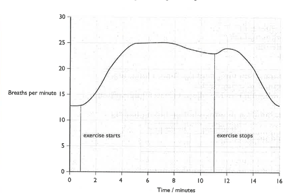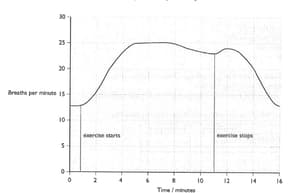Mary Jones and Geoff Jones Solutions for Chapter: Respiration and Gas Exchange, Exercise 3: End-of-chapter questions
Mary Jones Biology Solutions for Exercise - Mary Jones and Geoff Jones Solutions for Chapter: Respiration and Gas Exchange, Exercise 3: End-of-chapter questions
Attempt the practice questions on Chapter 11: Respiration and Gas Exchange, Exercise 3: End-of-chapter questions with hints and solutions to strengthen your understanding. Cambridge IGCSE® Biology Coursebook Third Edition solutions are prepared by Experienced Embibe Experts.
Questions from Mary Jones and Geoff Jones Solutions for Chapter: Respiration and Gas Exchange, Exercise 3: End-of-chapter questions with Hints & Solutions
Determine that the following description apply to aerobic respiration, anaerobic respiration or to both?
Lactic acid or alcohol is made.
Determine that the following description apply to aerobic respiration, to anaerobic respiration or to both?
Carbon dioxide made.
Determine that the following description apply to aerobic respiration, to anaerobic respiration or to both?
Heat released.
A girl breathed into a machine that recorded the volume of the air that she breathed in and out. The results were recorded as a graph of volume against time. The diagrams show results obtained when she was resting and when she was exercising. 
Describe the mechanism that brought these changes in the rate and depth of breathing helped the girl's body.
The graph shows how a student’s breathing rate changed during and after exercise.
Calculate the increase in the student’s breathing rate from when he started to do exercise, to its maximum rate.
The graph shows how a student’s breathing rate changed during and after exercise.
Calculate how long it took after he finished his exercise for his breathing to return to normal.
The graph shows how a student’s breathing rate changed during and after exercise.
Explain why his breathing rate does not return to normal immediately after he stopped exercise.
The graph shows how a student’s breathing rate changed during and after exercise.
Describe and explain how would you expect the student's heart rate to change during the 16-minute period shown on the graph.
